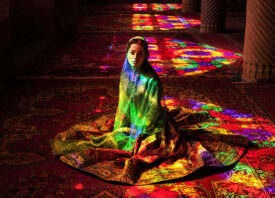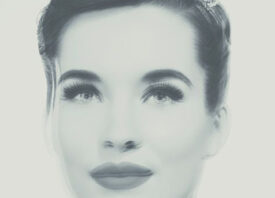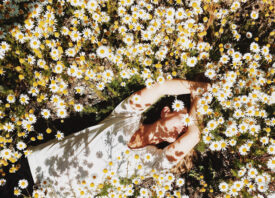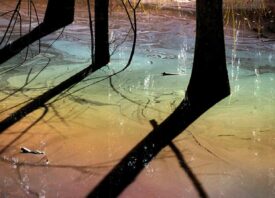Search this site
What is beauty? Mihaela Norok traveled around the world to answer the perennial question

Romanian photographer Mihaela Norok embarked on a journey throughout the globe to create The Atlas of Beauty, an ambitious project that seeks out to prove that beauty is everywhere around us and comes in all shapes, colors, and sizes.
In every era and every society, certain physical characteristics ingrain themselves through art and media as idealized standards of beauty. Furthermore, these traits tend to be associated with certain behavior and social status, leading to a phenomenon psychologists call ‘physical attractiveness stereotyping‘.
The specific traits can vary across regions and eras depending on socio-economic and political factors, and steer public opinion to value a very limited range of characteristics and dismiss all the rest.
In a time when the influencer market is a 10 billion dollar industry, Mihaela Noroc defiantly decided to render everyday women in ordinary situations, far from the glitz and artificiality of social media. The Atlas of Beauty celebrates all of its subjects with dignity, regardless of nationality, age, race or social status.

“… the diversity of our world is a treasure, not a reason for conflicts,” she says. Since 2013, Noroc has captured more than two thousand women from all over the world, from the vibrant Amazon rainforest to the crowded streets of New York City. Her book features 500 of those portraits accompanied by a brief personal background of the subject in each photograph.
Ironically, The Atlas of Beauty has become a viral sensation on social media earning mentions in Forbes, BBC, and many of the most important news outlets in the globe. We had the great pleasure of chatting with this extraordinary artist, talk about her travels, her workflow, and of course, about beauty.
What were you doing before Atlas of Beauty?
“I was working in TV production, mostly for money. And when you do something exclusively for money it’s hard to be good at it. It took me years to find my path.”
What gear do you use for your street photography? How do you achieve that “studio feel”?
“At the moment I’m using a Canon 5D Mark IV, and a 28-70 F2 lens. Sometimes, when I go in certain locations and I want to be more discreet and light, I also use a 40mm F2.8.
“When I find somebody in the street, I try to find a place in the vicinity with shade and good frontal light.”

The vast majority of your subjects lack any experience in front of the camera. How do you manage to make them feel comfortable and pose like professional models?
“I try to be very open like I’m with an old friend, I joke a lot, I try to make them feel natural and comfortable. I would say that for my type of photography it’s much harder to work with a professional model. Because a professional model has a certain type of posing, which is in her blood already, and I’m looking for something else, something more natural which is hard to achieve with a professional.”
What is beauty to you? How do you spot it among the crowd?
“Beauty comes in many, many forms and ways. I like to say that beauty is all that makes us good human beings. For me, beauty is kindness, generosity, wisdom, creativity, strength, resilience, optimism and so on. Of course, you’ll see in my project a lot of conventional beauty too. That’s because for hundreds of years beauty meant harmonious features and if I want to change something I have to make a mix between what most people think beauty is and what I think beauty should be.
“If I would only show unconventional beauty I wouldn’t change anything. People would simply refuse to take such a huge step in the way they perceive beauty.”

Where do you usually look for your subjects when you arrive in a new city? Can you give us a brief description of a typical day behind the scenes of The Atlas of Beauty?
“Before arriving in a new place I ask my social media followers from that place to offer me advice. They tell me where to go, they tell me about communities of women or events. Sometimes I find women with exceptional stories online and I give them a message to meet them. But in 80% of the cases, I find them on the street. Although I love crowded places like markets, stations, and big boulevards, I took some of my best photos in very quiet places.”

What’s your take on the current state of the industry? How can a photographer make a living out of personal projects these days?
“It’s a growing market with many opportunities, but there’s also an immense competition between photographers. In a way, that’s great, because it brings more creativity to the industry. But, on the other hand, there’s probably also more cheating and infighting than ever.
“Regarding your second question, I guess it has always been difficult to make a living from personal photo projects. But the advantage today is social media; it can allow any personal project to become a world hit because you have millions of potential fans just a click away.
“Social Media is a great opportunity for photography. For me it proved decisive. But I guess we have to keep in mind that there’s much, much more than that. Photography was born before social media and it will last much longer after it.”
So far you’ve been on every continent except Antarctica. What’s your assessment of human rights and wage equality for women around the world?
“Wage equality is only a very small part of gender equality. Unfortunately, there are still many places around the world where women are not even allowed to be photographed without permission from their husbands or brothers. There’s a huge problem with women’s rights in many parts of the globe although we sometimes don’t take that serious if it doesn’t happen around us. The good news though is that things are improving little by little. But we shouldn’t take this trend for granted.”

What has your baby daughter brought to the project? Has she had an impact on your approach to The Atlas of Beauty?
“Definitely. I’m more motivated than ever to travel the world and work on the project. The fact that she will be able to grow up surrounded by these portraits and stories of fantastic women is giving me a lot of enthusiasm. And enthusiasm is the fuel of my project. I’m not sure if I would have had enough motivation to continue the project without her.”
What are you working on now? What’s next?
“I’m working on the second part of my book, The Atlas of Beauty. I hope I will be able to publish it in 2021. I think it will be a more mature and profound approach and I hope it will have at least the same success as the first part. In parallel, I’m also doing different collaborations because this is the only way to finance my project.”
You can order The Atlas of Beauty through Amazon, Barnes & Noble and several other retailers.








